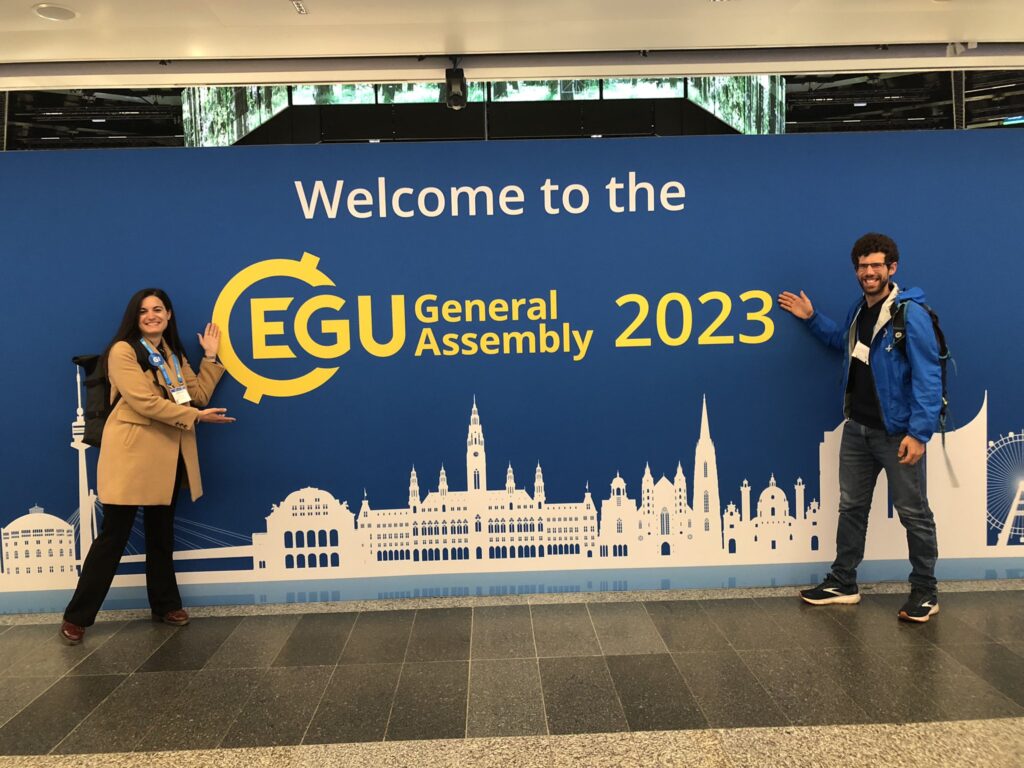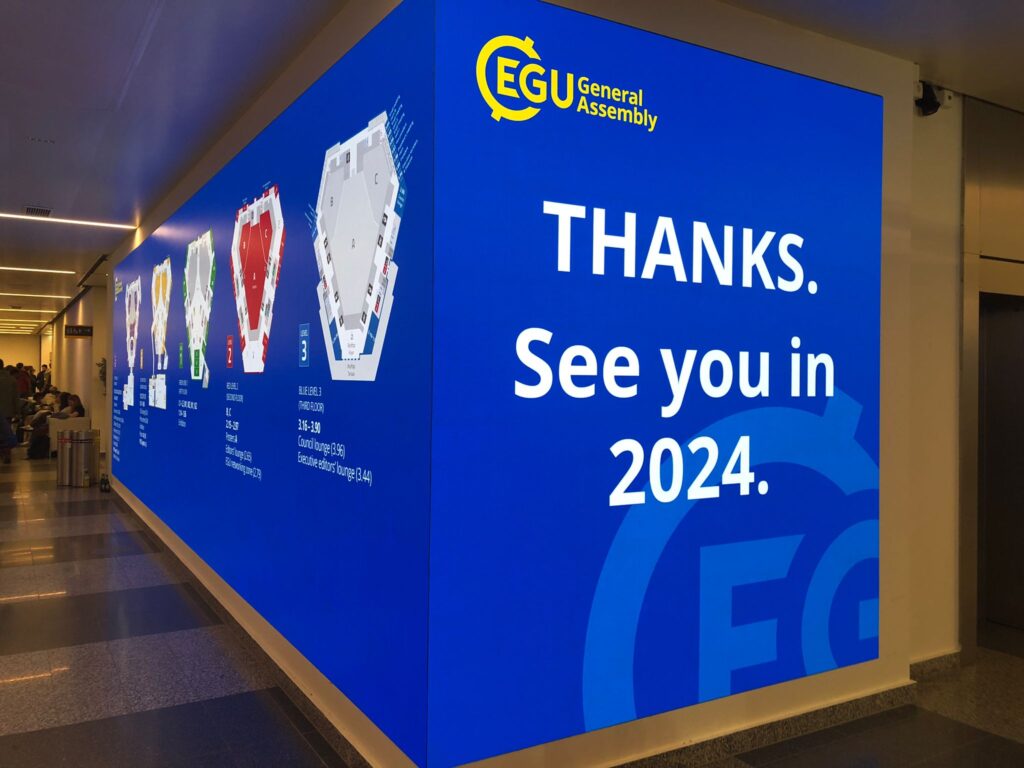Sharing project updates, meeting colleagues from all over the world and finding new inspirations for future collaborations and works: takeaways from EGU23
Last week, April 24-28, members of our team travelled to the wonderful Vienna, attending the latest edition of the European Geosciences Union (EGU) General Assembly. The conference is the event that yearly gather together over 15000 scientists active in the field of geosciences, organising oral presentations, poster exhibitions and networking occasions. Following a long tradition established in 2005, also this year EGU23 took place in Vienna, at the Austria Center.

After a fruitful 2022 edition, the LabMGF attended again the conference, sharing with 2 contributions the most recent progresses in our projects related to glacier monitoring and civil infrastructure inspections.
On Monday 24, indeed, Francesco Ioli presented his work High-frequency automatic 3D glacier monitoring using low-cost time-lapse cameras and Deep Learning algorithms in the session entitled From historical images to modern high resolution topography: methods and applications in geosciences organised by the EGU Geomorphology group. In this occasion, Francesco officially launched ICEpy4D, a new python toolkit for 4D glacier monitoring and the case study on the Belvedere glacier. The source-code of the library can be found on GitHub.
During the days of the conference, other exciting news regarding the Belvedere glacier monitoring were announced! Indeed, we started publishing as open-data on Zenodo the results of our long-term (1977-2022) photogrammetric monitoring of the glacier with drones and GNSS. A preview of the historical point clouds available for the download can be explored on a web browser through a Potree-based application.
Happening now at #EGU23! 📍@francescoioli is presenting the latest progresses in the development of the ICEpy4D library for the Belvedere glacier monitoring@PolitecnicoDICA https://t.co/qt9MSa4BOi
— Geodetic and Photogrammetric Laboratory of PoliMi (@LabMGF) April 24, 2023
Day 1 of EGU23 also saw occurring the interdisciplinary session on Hybrid modeling of natural hazards: blending deep-learning, data-driven approaches and physics-based simulations. In this occasion, Federica Gaspari illustrated our activities and methodology for dam and bridge inspections, with a special focus on the Trepidò dam case study from 2021, with the presentation Integration of 3D surveying approaches for critical infrastructure digital twins in natural hazard-prone scenarios. The audience had the opportunity to learn more about the procedure for the in-situ data collection, the following processing and resititution of 3D data, also with interactive approaches. Indeed, features and explorable data formats implemented in PONTI (Potree-based platfOrm for iNfrastructure Inspections) were illustrated, sharing an open-source customizable template through GitHub.
Learn more about PONTI, Potree-based platfOrm for iNfrastructure Inspections, presented by our @fede_gaspari at #EGU2023
— Geodetic and Photogrammetric Laboratory of PoliMi (@LabMGF) April 24, 2023
Open-source template available on GitHub: https://t.co/nV0IMFfRHI@PolitecnicoDICA https://t.co/jvlgGqG3eU
This edition of EGU gave us the opportunity to finally experience the conference in person, reuniting with friends in the geosciences and meeting new people with many points of interest in topics and projects… now is the time to turn inspirations into new collaborations and project ideas!
See you next year, Vienna!

Stay tuned to learn more about our progress and projects!
You can follow us on Twitter: @LabMGF
More details on our activities on the GitHub profile: labmgf-polimi